The Sigurtà Garden Park in Valeggio sul Mincio is now also known outside Italy’s borders for being one of the most beautiful parks in Italy. On the contrary: in 2013 it was awarded “Italy’s most beautiful park” while in 2015 it took second place in the European Garden Award, surpassed only by Herrenhäuser Gärten in Hanover, Germany. And its charm attracts more than three hundred thousand visitors each year. The contemporary history of the Sigurtà Garden Park began in 1941, when Carlo Sigurtà, an industrialist in the pharmaceutical industry, bought from Maria Paulon, wife of a local doctor, Cesare Sangiovanni, a piece of land that in the 15th century had been owned of the noble Contarini family of Venice, who had planted an agricultural estate there, while between the eighteenth and nineteenth centuries it saw the birth of the English garden of Marquis Antonio Maffei, who wanted to create a romantic park here, thanks in part to the suggestions of the great poet Ippolito Pindemonte, who was his guest in 1792. By the time Sigurtà bought the land, the garden was unrecognizable: it was thanks to him that the park was redeveloped, including the renovation of the 19th-century buildings built by Marquis Maffei (the hermitage, the small castle, and the votive grotto), and enlarged, from the original 22 hectares to the current 60.
The garden was finally opened to the public in 1978: initially it could be walked through by special cars, while from 2000 onward it can only be visited on foot. Visitors enter by strolling through the kilometer-long Avenue of Roses, from where it is possible to reach all the park’s points of interest, such as the scenic walkway from which there is a splendid view of the Mincio Valley, the “Great Grassy Carpet”, a huge treeless lawn, the Water Gardens that open up with a view of the castle of Valeggio sul Mincio, and then again theHermitage, built in 1792 by Antonio Maffei as well as the castelletto, a neo-Gothic building where the Sigurtà family also welcomed their guests. In the meantime, ownership of the park, which is still private today, passed to siblings Giuseppe and Magda Sigurtà. It was Giuseppe Sigurtà himself, in the early 2000s, who commissioned architect and Englishman Adrian Fisher to advise him in creating the Labyrinth of the Sigurtà Garden Park. Fisher is one of the world’s best-known maze designers: he has designed some 700 mazes scattered around the globe, and considers the one in Valeggio sul Mincio, designed by Sigurtà himself with him, to be one of the five best in the world.
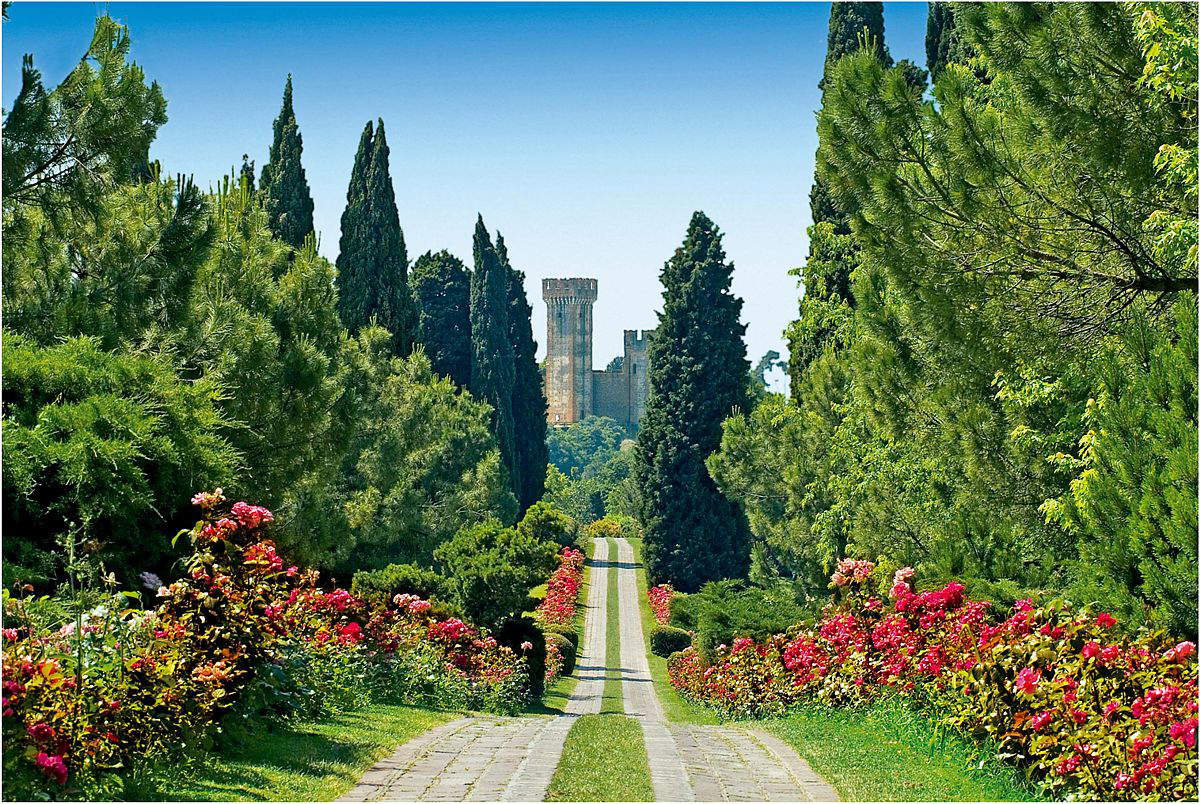
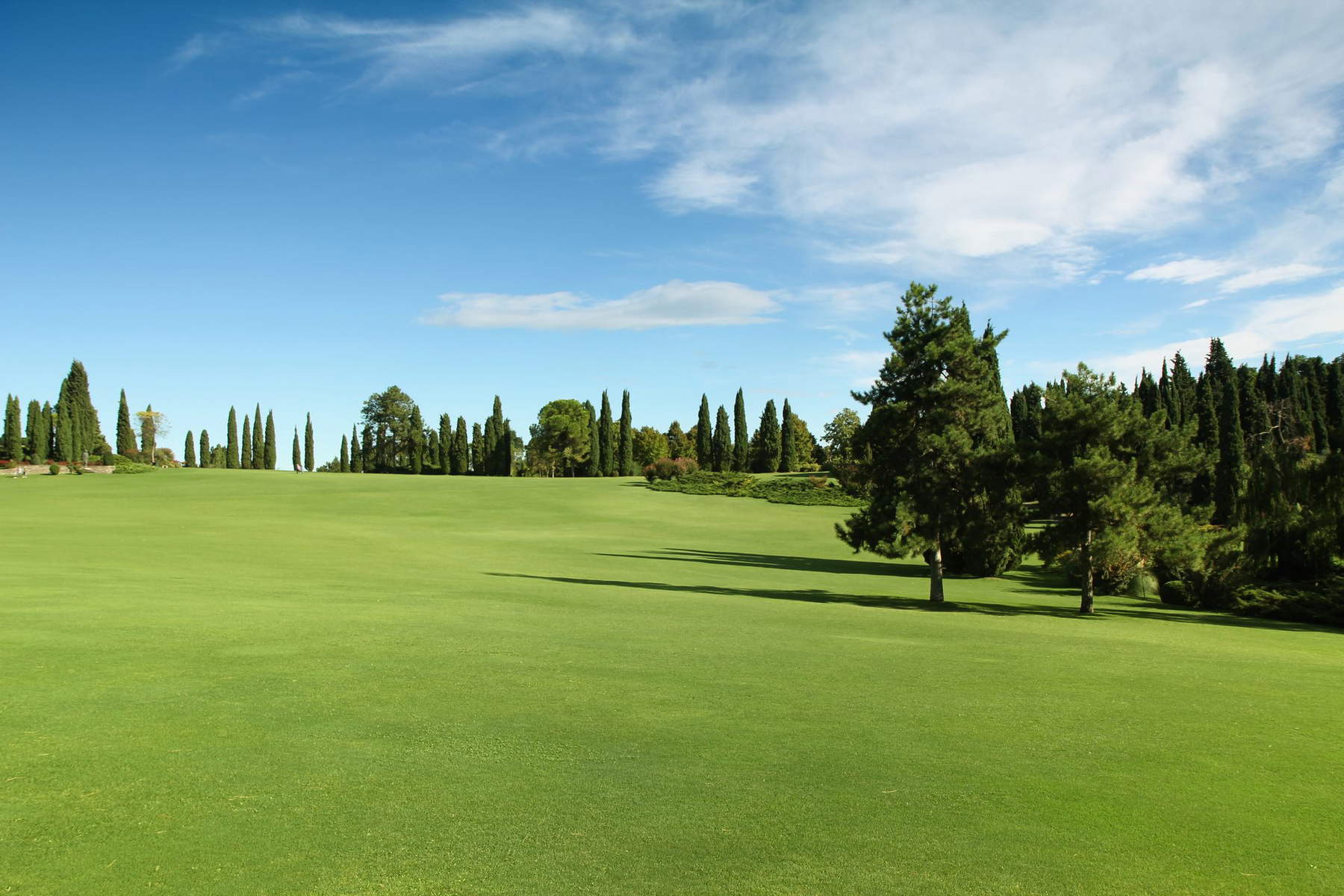
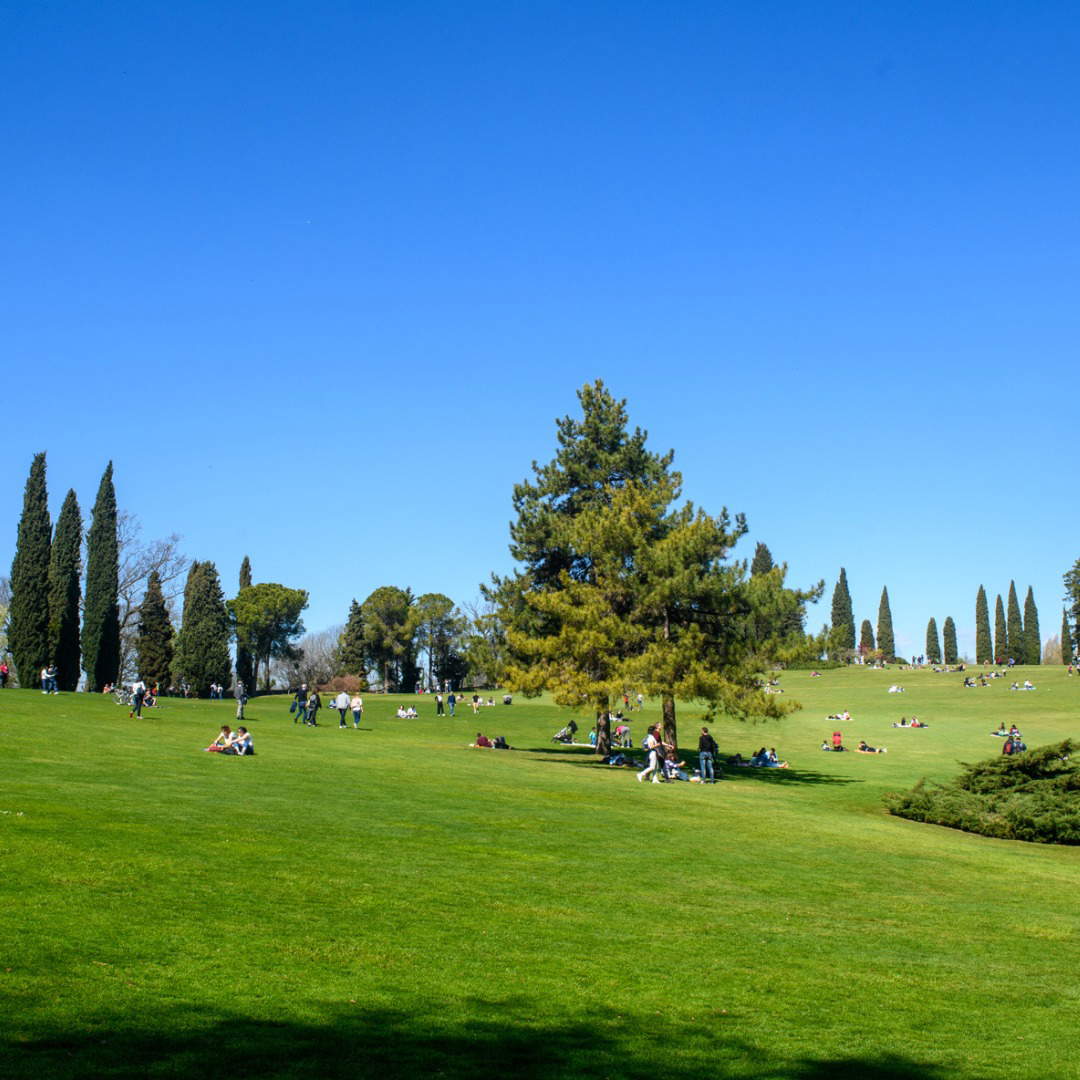
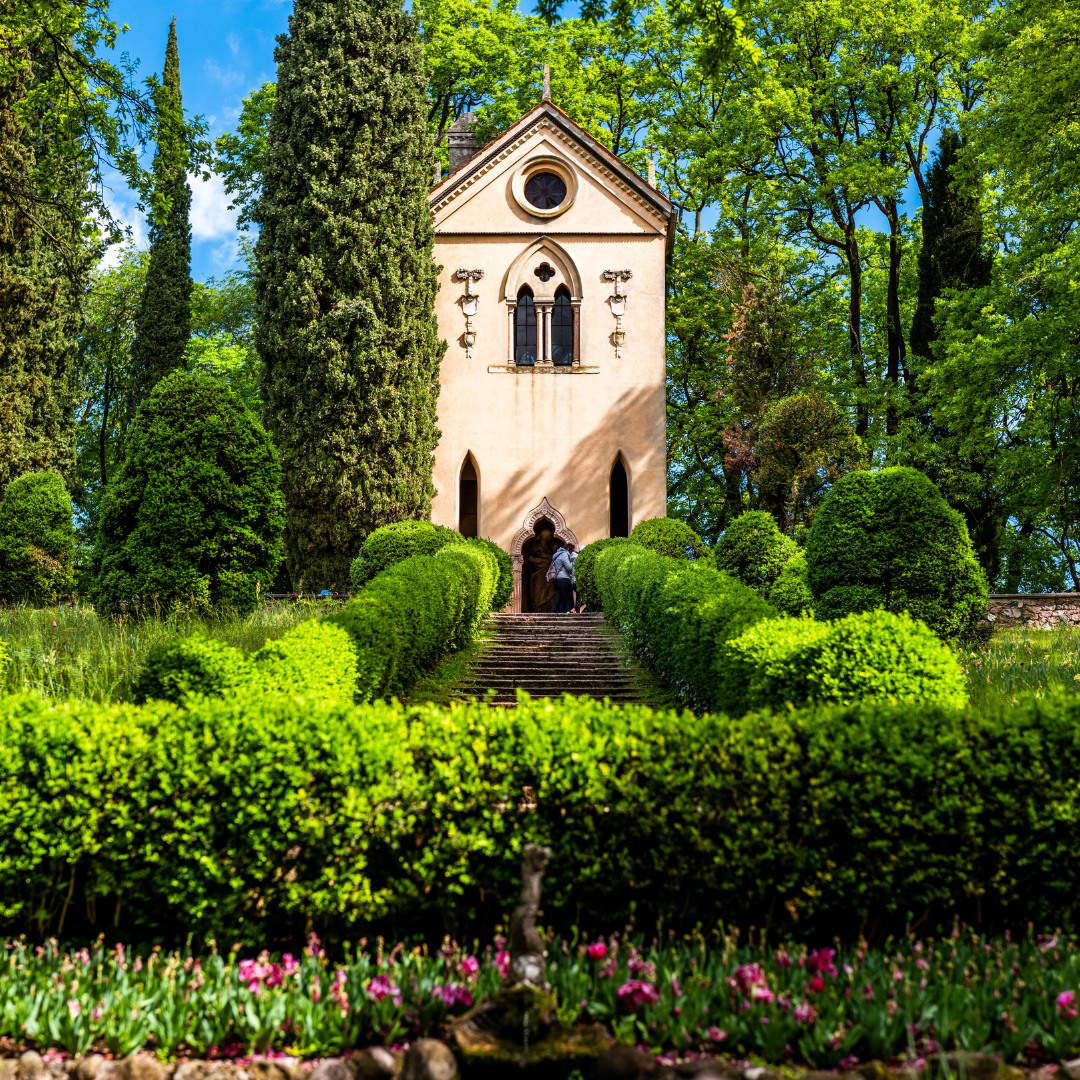
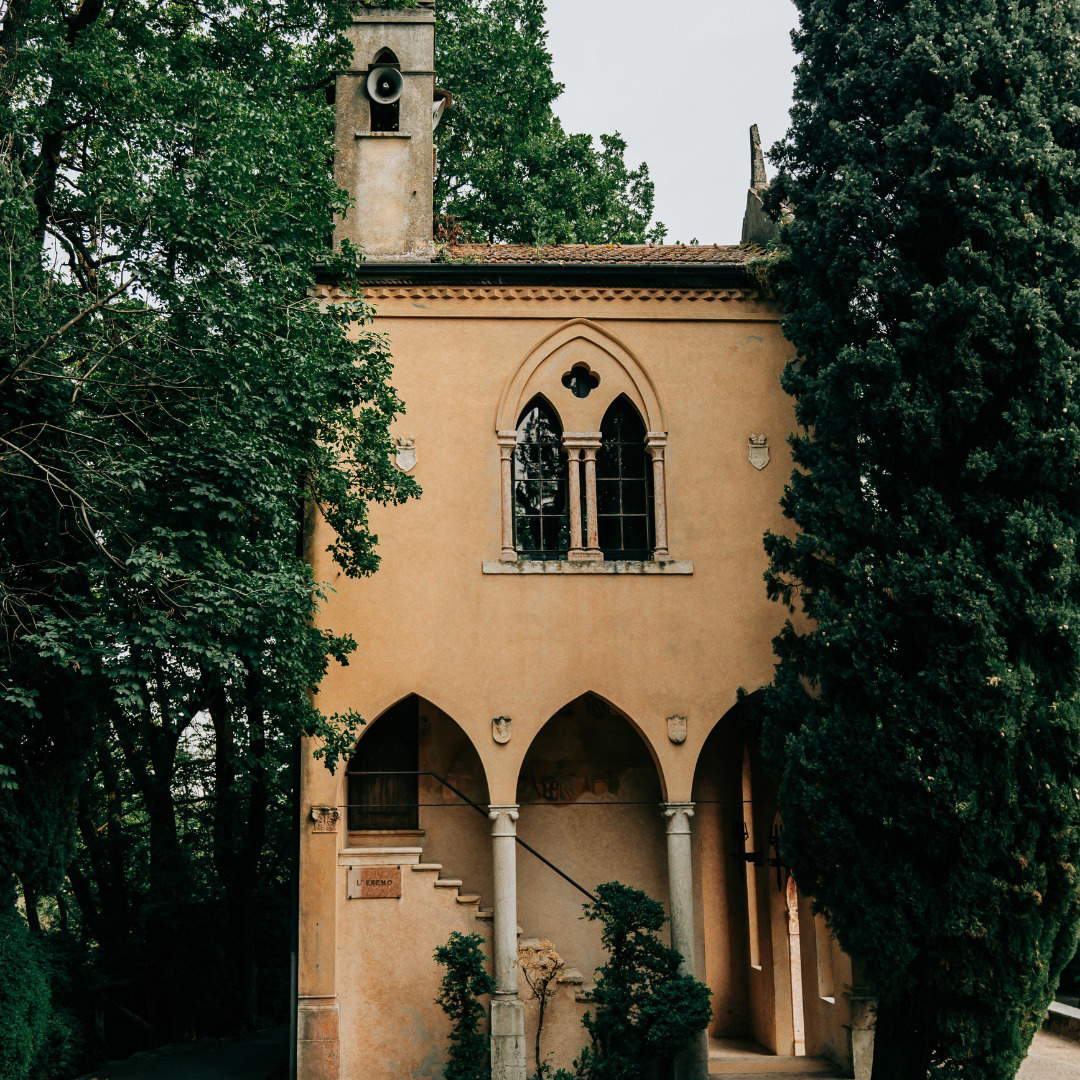
It took six years to open the labyrinth, which opened in July 2011, on an area that was previously used as a coach parking lot, at the southern edge of the park (the labyrinth is reached by walking down Viale delle Rose). The labyrinth designed in 2005 by Adrian Fisher covers an area of more than 2,500 square meters and is made entirely of yew (taxus baccata of the taxaceae), housing about 1,500 specimens, from Holland. A dark green-colored plant, widely used inars topiaria because it is long-lived and particularly suitable for forming large ornamental hedges that require no special care, it reaches a height of between 10 and 20 meters, and even in the labyrinth of the Sigurtà Garden Park one finds oneself immersed inside a maze of tall plant walls. Compared to boxwood, another typical plant in labyrinths, yews allow for less dense hedges, consequently the impression one has upon entering a yew maze is that of being in a less oppressive and less enclosed space.
Speaking with engineer Ettore Selli, author of the book Italian Labyrinths, Giuseppe Sigurtà said that the inspiration to plant a plant labyrinth in the family park came to him after a visit to the Ducal Palace in Mantua, observing thefresco of the labyrinth in the Hall of Horses, once given to Lorenzo Leonbruno and now instead attributed to the German Bartholomaus Dill Riemenschneider. “Where was it best to start,” Selli writes in his volume, “to design a labyrinth if there were no design manuals? During our interview Giuseppe Sigurtà told me, with great humility and spontaneity, that after coming up with the idea he began to travel all over Europe to study the most famous layouts on the old continent with the intention of gleaning the unwritten rules behind the art of labyrinths. Hence the European soul of the layout was born, which does not respond to predefined architectural and botanical constraints, but proves to be almost visionary, like its inventor, bringing for the first time in Italy architectural expedients never seen before.”
That of the Sigurtà Garden Park is a multi-solution labyrinth, meaning there are several ways to get to the center. The structure is geometric and, although in concept it is typically Italian, in implementation it is Anglo-Saxon in inspiration: the model, in particular, is the labyrinth at Hever Castle in England, Kent. As in the English labyrinth (the one in Valeggio, however, is larger), the structure has a square plan and the outer corridors of the maze are rectilinear, but then the structure unfolds according to concentric circles that lead to the center of the labyrinth, where a tower inspired by the one found in the Bois de Boulogne park in Paris stands, topped by a dome and flanked by two opposing staircases that rise in a spiral and are each two and a half meters high. And from the top of the tower it is possible to admire the entire maze pattern.

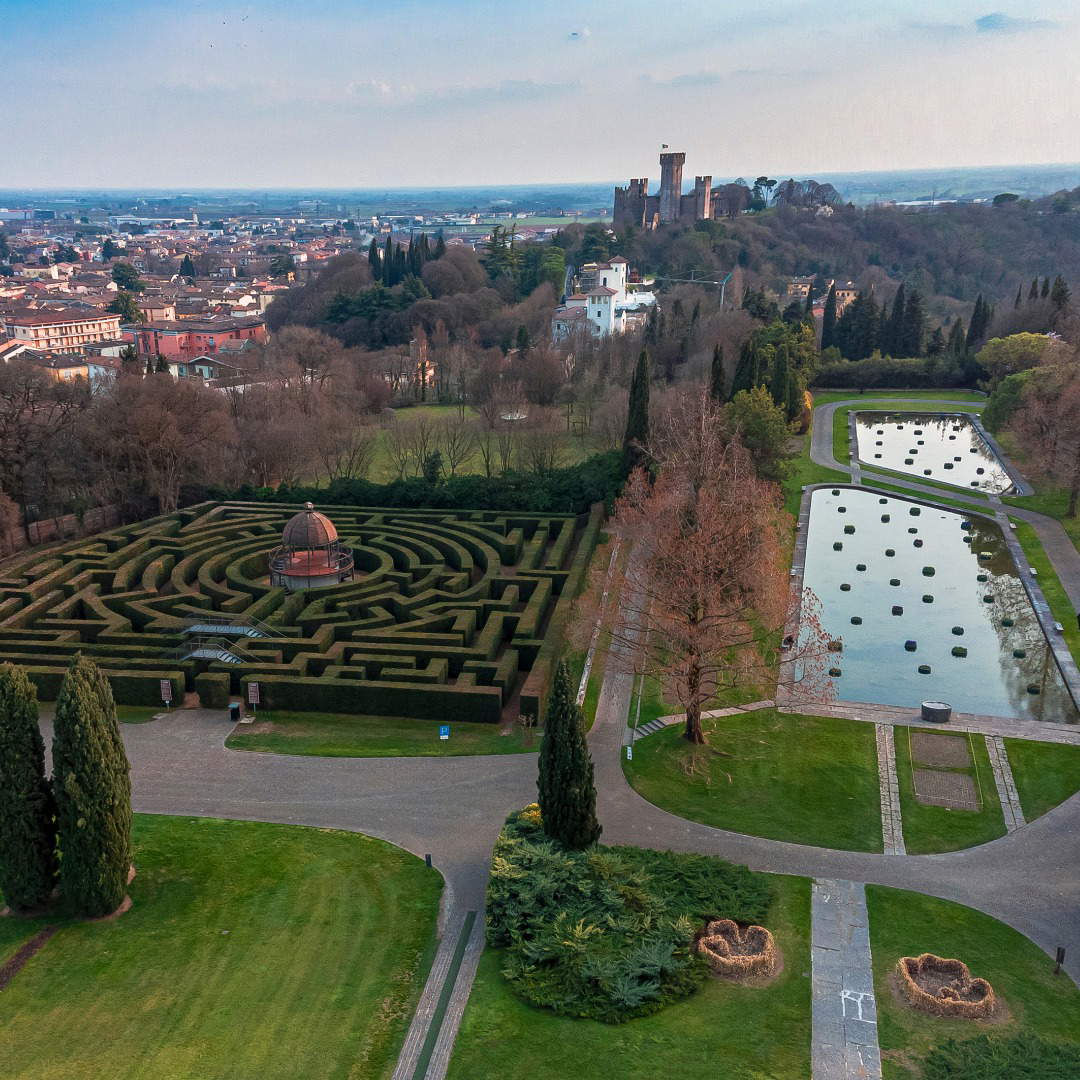
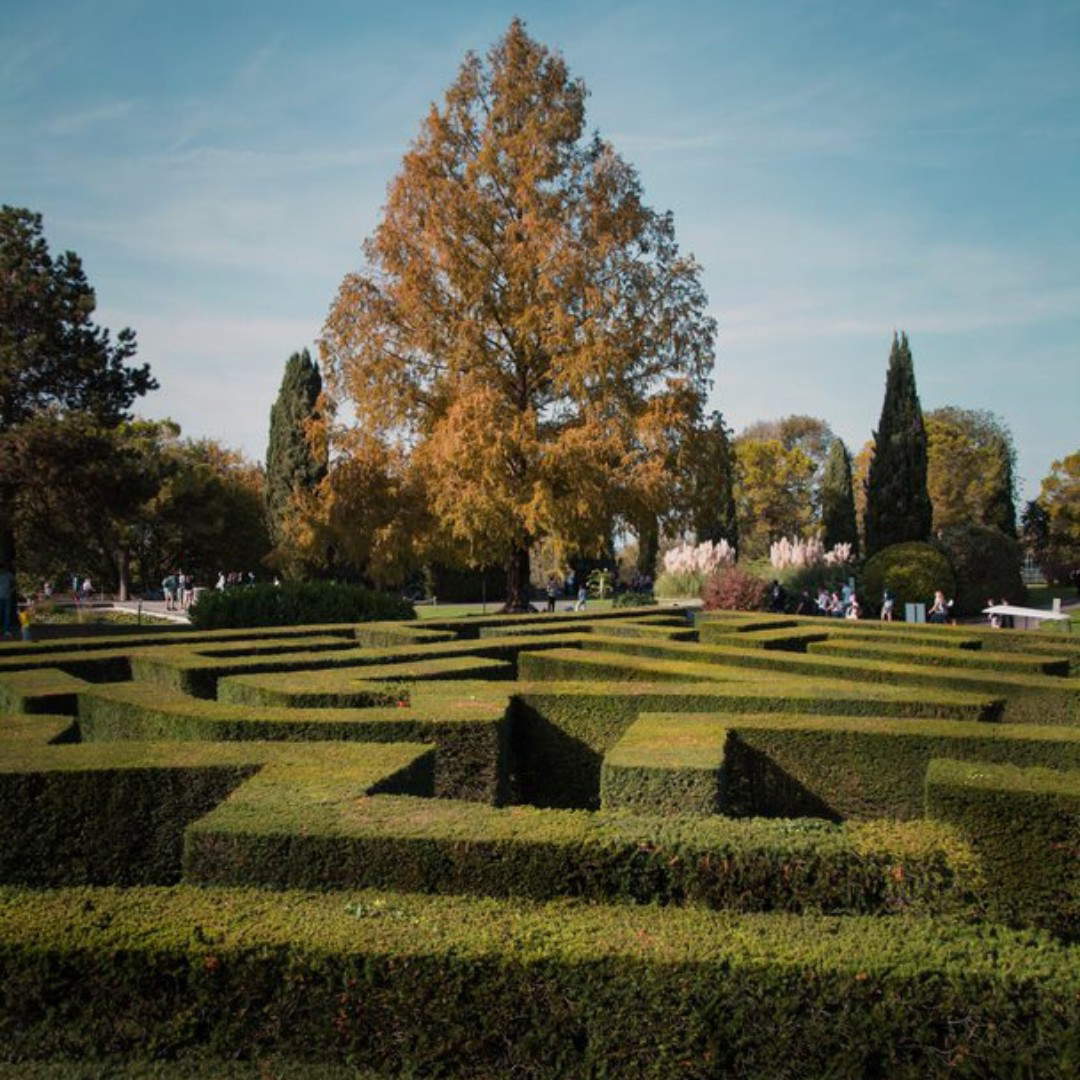
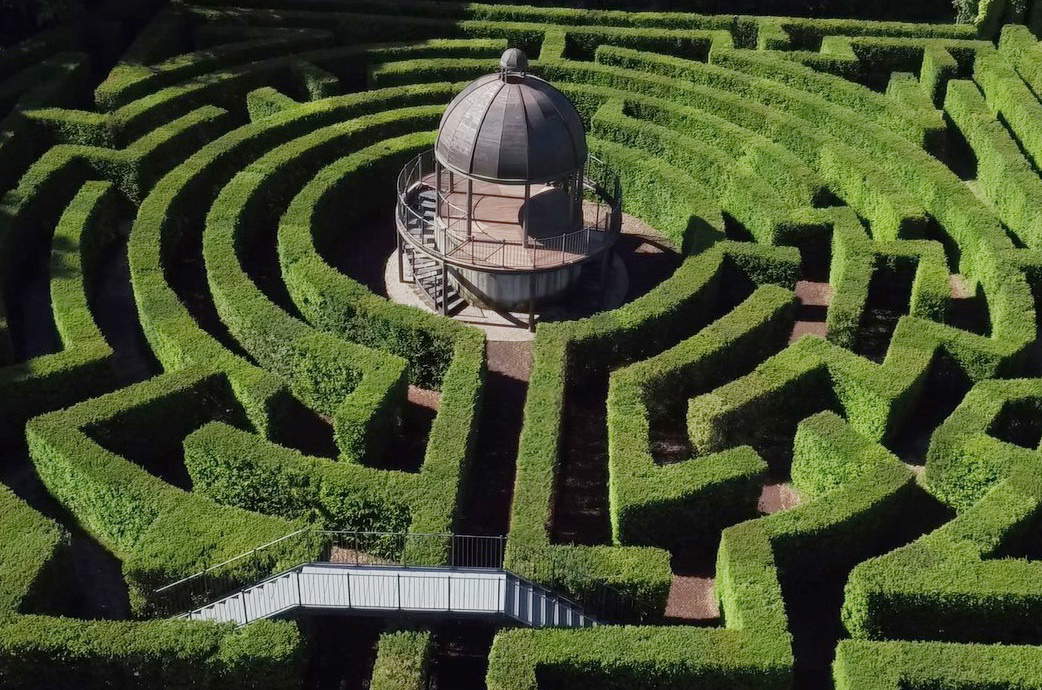
Speaking of views from above: a singular peculiarity of the Sigurtà Garden Park Labyrinth is its... vertical development. A “3D pattern,” as Adrian Fisher called it: the Venetian maze is in fact one of the rare labyrinths where there are stairs and elevated passages that offer visitors a view from above the labyrinth or at least a part of it. These passages are secured by metal ramps and are unmatched in the rest of Italy, although there are similar examples in labyrinths located outside. And passage over these ramps is mandatory should one wish to reach the center.
The structure of Valeggio’s labyrinth is designed with the express purpose of not being too difficult for visitors. “Be generous in your estimation of the solving time,” Fisher would have told Sigurtà, “so that those who visit can solve it even earlier and can keep a good memory of it enough to want to return.” Indeed, one of Sigurtà’s goals, also recalled in an interview with the Garden Route Italia guidebook in 2021, has long been to enrich his labyrinth to make it a unique experience in the world. Upon reaching the tower, it will be possible to enter a tunnel that will lead to the soon-to-open Fossil Museum, which will collect the fossils collected by Carlo Sigurtà. Then, as far as the structure is concerned, a first idea is to add movable hedges that will change the pattern of the labyrinth to the visitor who will then not find himself walking through the same meanders twice. And then another idea, perhaps even more revolutionary, is to introduce the dimension of time into the maze through water portals that will be activated only on the visitor’s second pass and will block his path. “It’s a bit of the philosophy of life,” said Giuseppe Sigurtà: “if one does not try and try more than once, one will not succeed.”
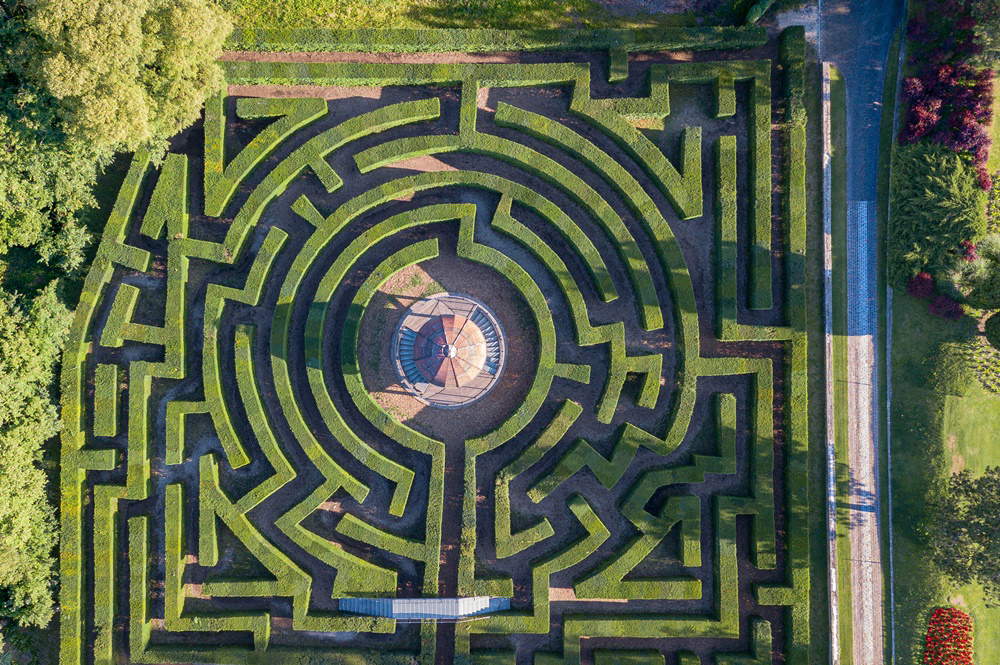
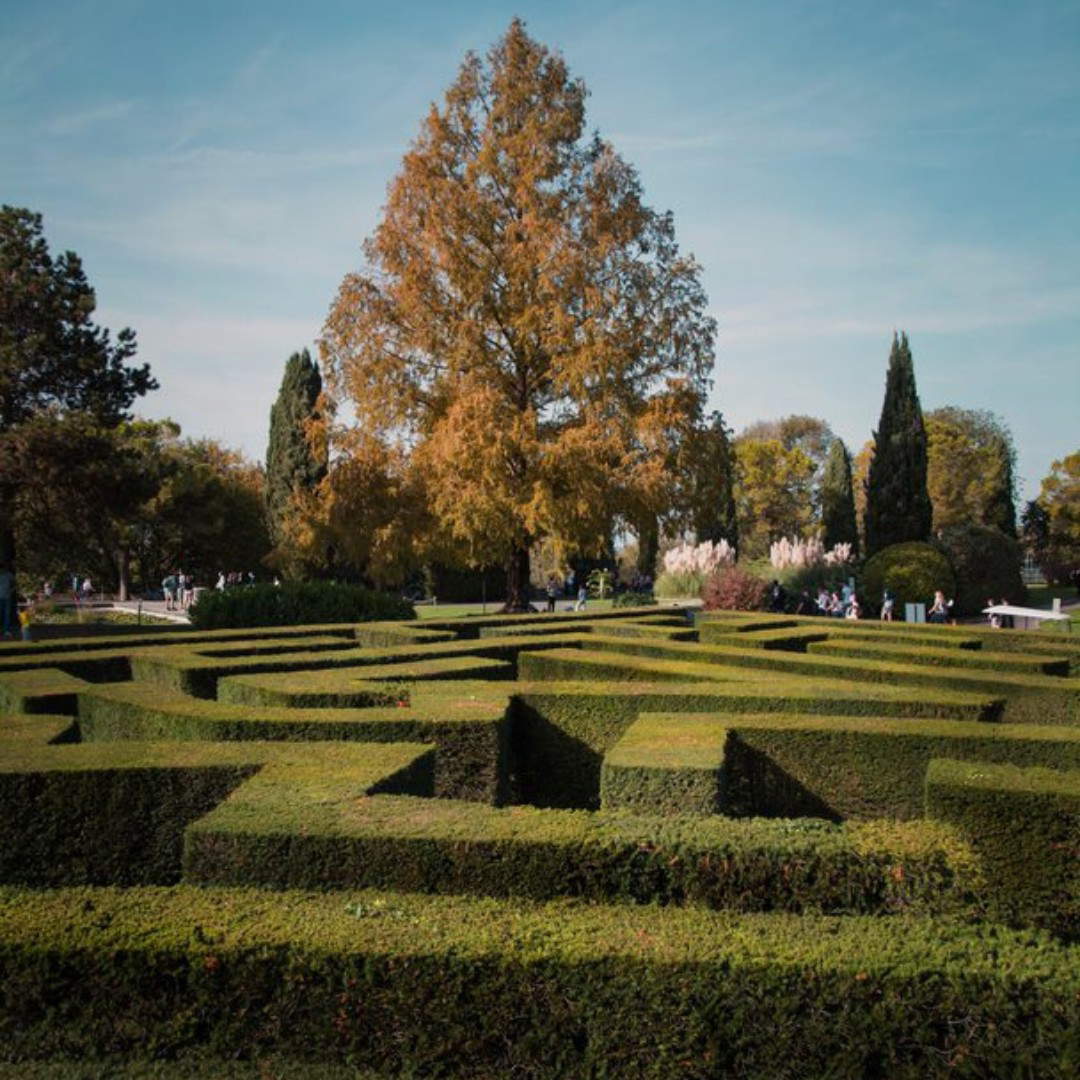
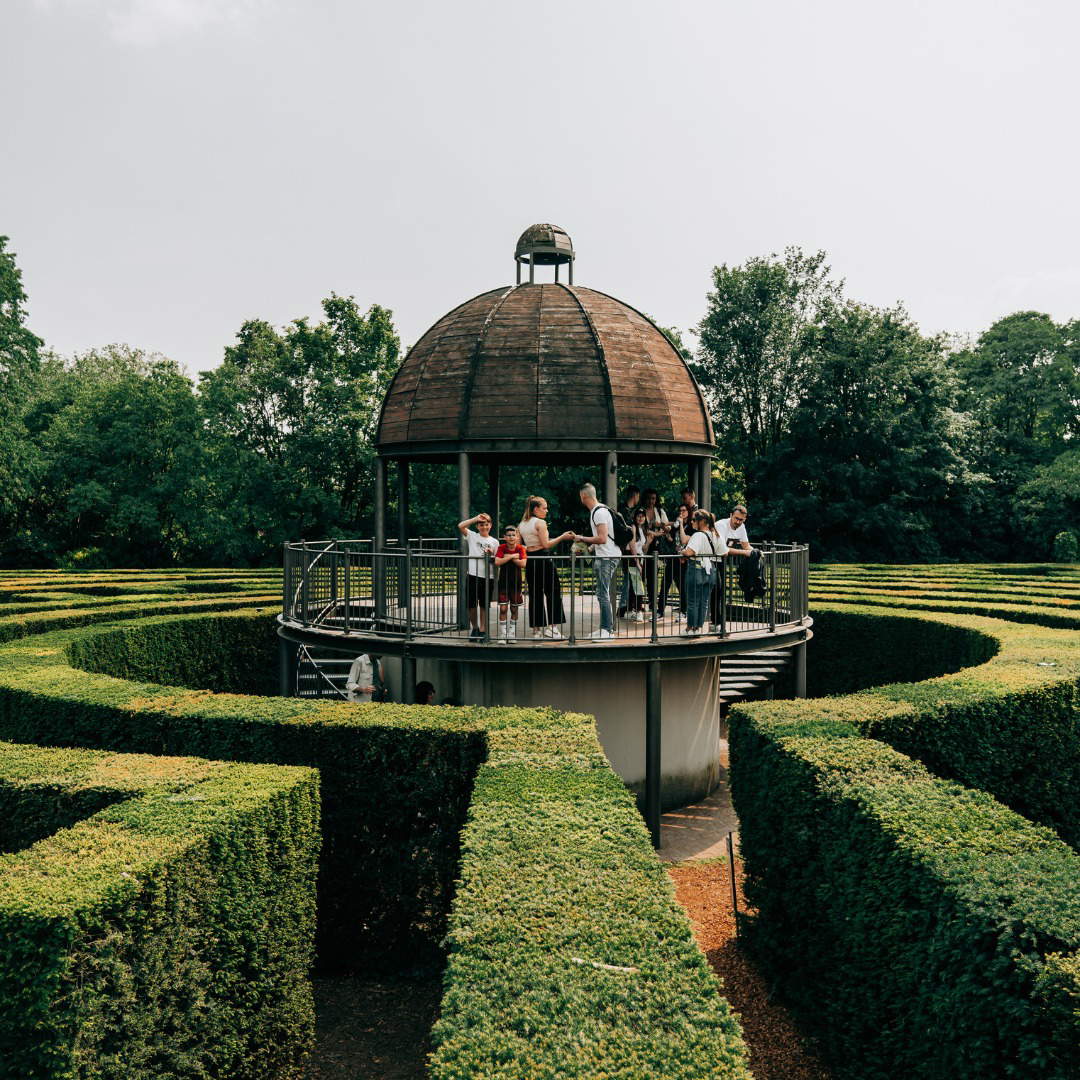

 |
| A labyrinth... vertical: the Labyrinth of Sigurtà Garden Park |
Warning: the translation into English of the original Italian article was created using automatic tools. We undertake to review all articles, but we do not guarantee the total absence of inaccuracies in the translation due to the program. You can find the original by clicking on the ITA button. If you find any mistake,please contact us.